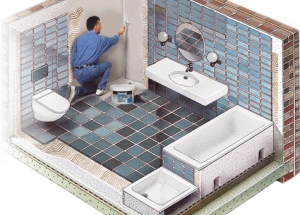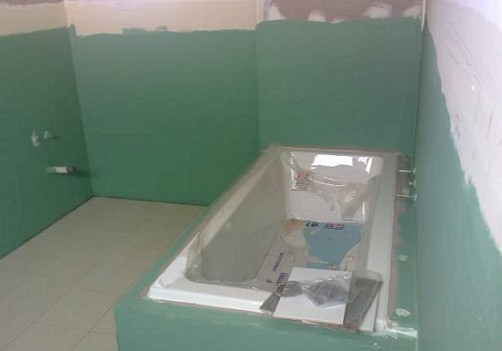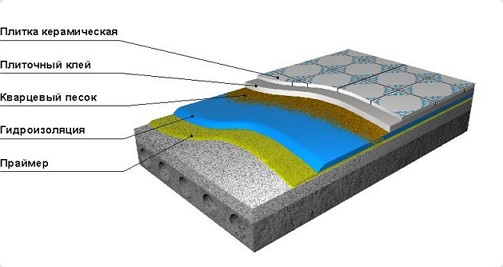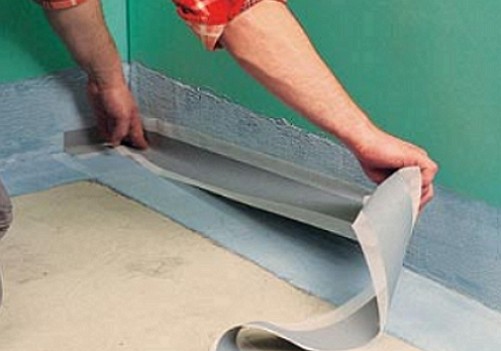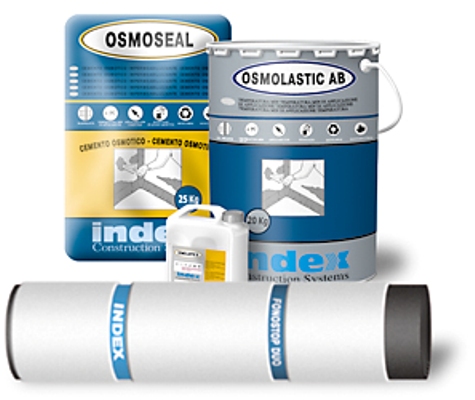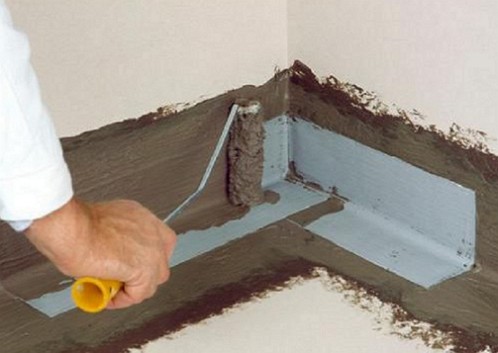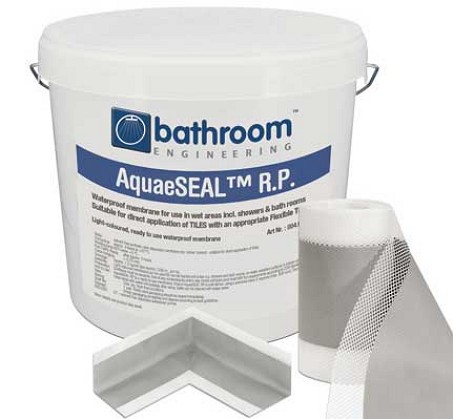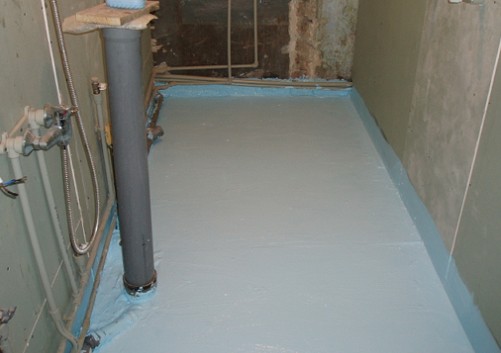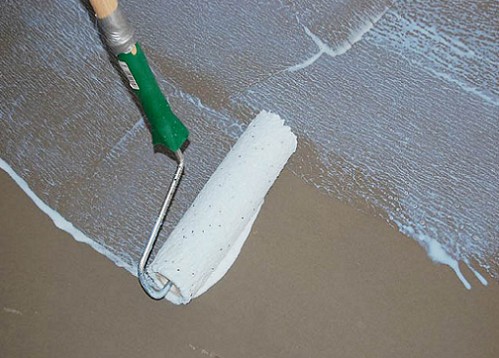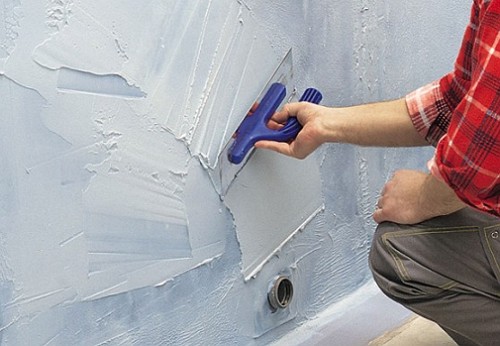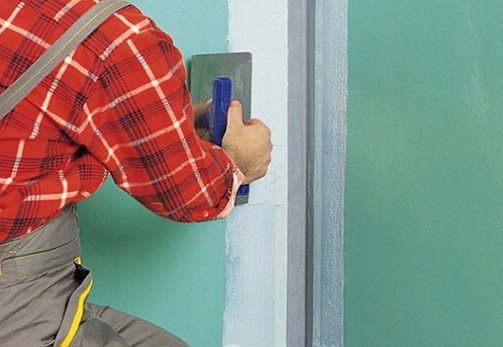The selection and proper use of waterproofing materials for the bathroom are as important as good and sympathetic neighbors from the bottom. Which of them is more important - neighbors or waterproofing in the bathroom, time will tell. Therefore, do not waste time and learn how to choose and use waterproofing materials.
Content
In order not to upset the neighbors and not to be upset by yourself
An indispensable condition that ensures trouble-free operation of the bathroom is its waterproofing.
Work on the waterproofing of walls and floors, as well as the joints of the bathroom prevent the penetration of moisture, which is the main cause of damage to building structures. Waterproofing involves the processing of those areas that are exposed to daily moisture during use. Such "wet zones" include:
• the floor in the bathroom
• Wall surface at a height of 120 cm from the floor
• areas around washbasins, bathtubs or showers.
Waterproofing is carried out for plumbing boxes and cabinets, in which there are water risers, which are a potential source of leaks. Therefore, the question: "How to make a waterproofing in the bathroom?" Excites many.
Distinguish the following options for waterproofing the bathroom.
What are the options for waterproofing bathrooms?
For the production of waterproofing works in the bathroom use specific adhesive and coating materials, the choice of which is determined by specific conditions.
Waterproofing materials
The most economical way of waterproofing is considered to be the use of overlay materials. As a waterproofing material, reinforced polyester, fiberglass bitumen, modified with polymers of styrene butadiene styrene or polypropylene. By the way, ignorance of the names of components of waterproofing oklechnyh materials does not exempt from responsibility for waterproofing the bathroom in the apartment.
The creation of a waterproofing layer with the application of pasting materials makes it possible to waterproof a room with a large area. However, waterproofing with adhesive materials is a laborious procedure, therefore preference is given to the use of lubricants. Oble waterproofing of the bathroom is made using the following waterproofing materials:
• bitumen-rubber compounds
• bitumen-polymer mastics
• cement-polymer mastics.
When carrying out waterproofing works, the use of film materials, including polyethylene, is not allowed, because this material does not have fully waterproofing properties.
Waterproofing materials, lubricating
Waterproofing materials of the lubricating type are made on the basis of bitumen oxidized with organic fillers and solvents. Latex, plasticizers and rubber crumbs successfully serve as fillers.
Such components contribute to increasing the elasticity of the waterproofing layer and resistance to the effects of negative factors.
Bitumen-rubber and bitumen-polymer compounds have excellent adhesion to all working surfaces of the bathroom: floor, walls and joints between them. The greatest effect of waterproofing these materials achieve in combination with reinforcing screed (fiber).
Reinforcing fiber screed enhances the properties of mastics and creates a reliable waterproofing layer.
Cement-polymer mastics are produced by industry from dry cement, water and mineral filler with the addition of binding components. Thanks to cement, cement-polymer mastic has excellent adhesion to the floor of the bathroom and has been successfully used for insulation.
How to professionally produce a lubricating waterproofing, shown in the video.
Ideal option, in terms of quality and convenience when carrying out work yourself, you can call liquid waterproofing for the bathroom. Agree that the convenience of applying liquid material manually in conditions of extreme constraint of small bathrooms, justifies the costs.
The application of one-component liquid waterproofing materials at the repair stage greatly simplifies the further finishing of the room: qualitatively, quickly and easily.
Before starting the waterproofing work with their own hands, it is necessary to prepare the surfaces of the working bases of the walls and the floor.
Floor waterproofing
Clean the floor in the bathroom from the debris with a damp cloth or brush. Seal the joints of the floor and walls with a sealing tape. Then make a primer of the floor surface using a deep penetration primer for two times.
Regardless of the type of flooring, the priming process is mandatory.
Subsequent application of the waterproofing layer to the floor is carried out using a spatula, roller or flat brush. It is recommended to use and apply finished waterproofing materials. The composition is applied in two layers. The first layer is applied using special impregnations, in this case the application of the waterproofing layer should capture the walls about 30 cm from the floor surface.
The subsequent layer of waterproofing is applied after the complete drying of the first layer with an interval of about 6 hours. The subsequent works on screeding and laying floor tiles can be performed one day after the waterproofing works.
Waterproofing of walls
The waterproofing of the walls in the bathroom is similar to the waterproofing of the floor. The surface of the walls is cleaned of dust and paint. Then a primer coat is applied.
Work begins with the corners of the walls and floor by sealing the joints between them with a sealing tape. For more reliable waterproofing of the joints of the walls, sealing corners are used. As the main waterproofing material, sealing cuffs and a special coating are used.
Isolation from the water walls is done by applying two layers with complete drying of each layer. When working, it is necessary to exclude the contact of waterproofing with water, so a couple of days will have to wait for the drying of the insulation layer. After the waterproofing of the floor and walls in the bathroom, you can proceed with the subsequent laying of tiles or painting.


